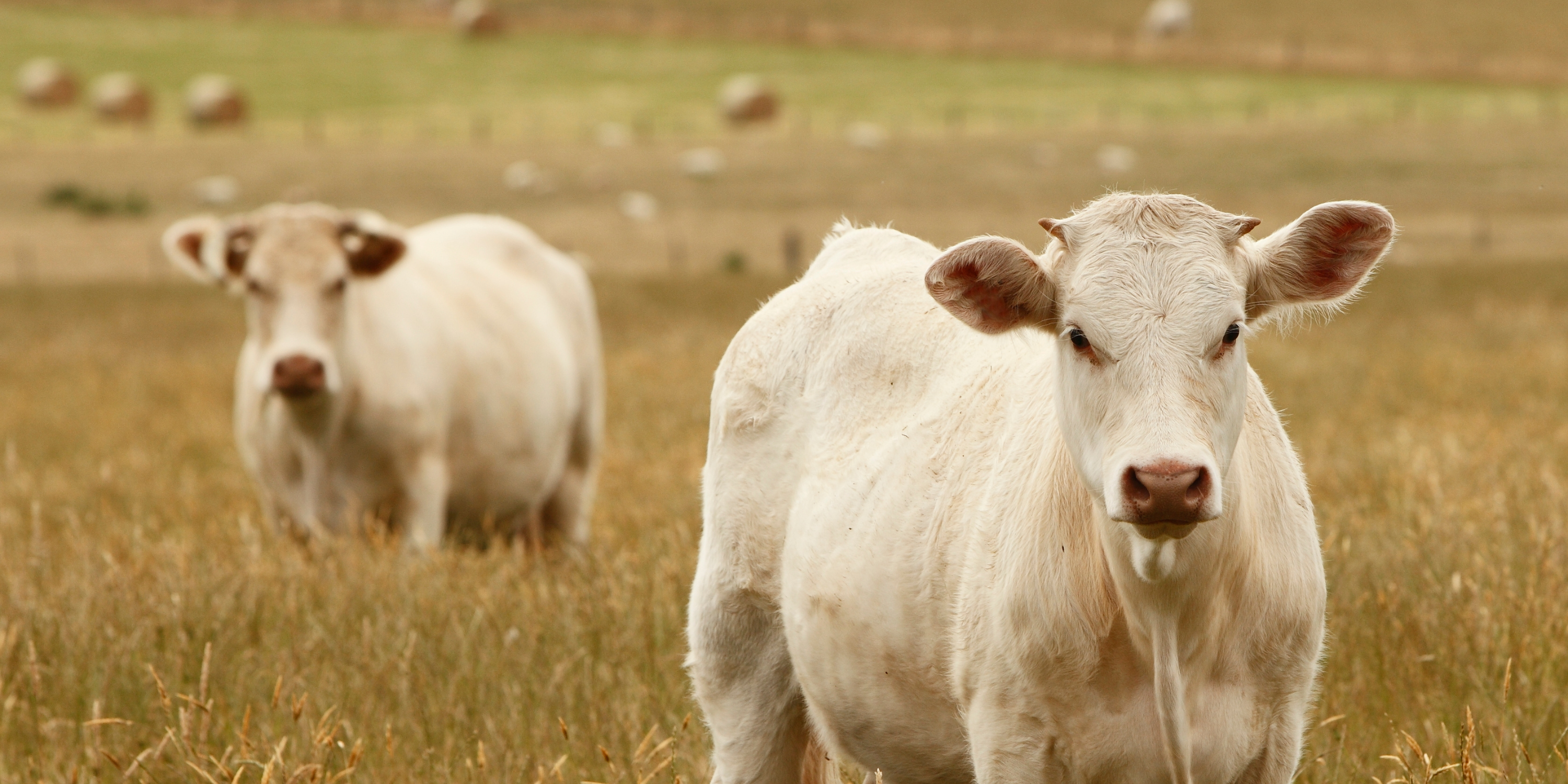
Cream of the Crop: Spotlight on Charolais Cattle
With their striking white coats and impressive muscling, Charolais cattle stand out—both visually and economically—among beef breeds. Originating from France, these heavyweight producers are prized for rapid growth, lean carcasses, and versatility in crossbreeding programs. In this blog post, we’ll explore the heritage, hallmark characteristics, and modern applications that make Charolais a powerhouse in the beef industry.
Origins and History
-
French Roots
The Charolais breed hails from the Charolles and Blanzy regions of Burgundy, France, where, for centuries, local farmers selected cattle for size, strength, and draft power. By the 18th century, they were recognized for both work and meat production. -
Export to the World
Charolais were first exported from France in the mid-19th century. They reached the United States in the 1930s, where breeders admired their ability to add weight and muscling to existing herds.
Defining Traits
-
Muscular Frame
Charolais are renowned for their broad, deep bodies and heavy muscling—especially in the hindquarters—delivering high yields of lean beef. -
Rapid Growth
Known for excellent average daily gains, Charolais calves often reach market weight faster than many other breeds, enhancing feedlot efficiency. -
Heat Tolerance
While originating in a temperate region, Charolais have demonstrated adaptability to warmer U.S. climates, especially when managed properly. -
White to Creamy Coat
Their distinctive ivory hide sets them apart visually and aids in reflecting sunlight, which can be beneficial in hot environments. -
Docile Disposition
Generally calm and tractable, Charolais cattle are easier to handle, which improves safety and reduces stress-related weight loss.
Charolais in Modern Production
-
Purebred Operations
Dedicated Charolais breeders focus on carcass traits—marbling score, ribeye area, and yield grade—while maintaining structural soundness and fertility. -
Crossbreeding Impact
Used extensively as a terminal sire, Charolais improve muscling and yield in crossbreds. Popular crosses include Charolais × Angus and Charolais × Hereford, blending marbling and mothering ability with increased cut-out weights. -
Grass‑Finished Programs
Although often grain-finished, Charolais also perform well on pasture, especially in rotational grazing systems that optimize forage quality and animal health. -
Commercial Feedlot Systems
With high feed conversion efficiency and consistent carcass traits, Charolais-influenced cattle are staples in large-scale feedlots seeking uniform, high-yield beef.
Economic and Environmental Advantages
-
Higher Carcass Value
The lean, heavy-muscled carcass of Charolais commands strong premiums in markets focusing on yield and trim levels. -
Feed Efficiency
Faster growth rates translate into lower days on feed and reduced input costs, boosting profitability. -
Land Utilization
Their foraging ability and adaptability allow producers to maximize pasture resources, reducing reliance on grain and supporting sustainable grazing practices.
Conclusion
From their origin in the French countryside to their status as a go‑to breed in U.S. beef programs, Charolais cattle exemplify the marriage of tradition and performance. Their rapid growth, substantial muscling, and adaptability make them invaluable in both pure and crossbreeding operations. Whether you’re a rancher focused on maximizing yield or a consumer seeking lean, flavorful beef, Charolais cattle continue to deliver on all fronts—cementing their “cream of the crop” reputation in the industry.
Up next: Swiss Strength: A Spotlight on Versatile Simmental Cattle
Share


